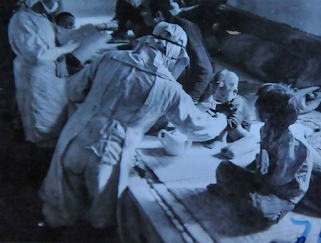Introduction
During World War II,
amidst the chaos and devastation, a dark chapter unfolded in the annals of
history known as Unit 731. Operating in secrecy, the Japanese military
conducted gruesome and inhumane experiments on thousands of innocent people.
This article delves into the horrifying details of Unit 731, shedding light on
the unspeakable atrocities committed during that time.
Origins and Purpose of Unit 731
Unit 731 was a covert
biological and chemical warfare research facility established by the Imperial Japanese
Army in the early 1930s. Led by Lieutenant General Shiro Ishii, the unit
operated in the Pingfang district of Harbin, in what is now northeastern China.
Its primary objective was to develop and perfect biological weapons for
potential use in the war.
Experiments on Human Subjects
Unit 731 conducted a
wide range of experiments on human subjects, often referred to as
"logs" by the researchers. These victims, including civilians and
prisoners of war, were subjected to unimaginable horrors in the name of
scientific research.
1. Vivisection: One of the most
gruesome practices carried out at Unit 731 was vivisection—performing surgery
on live subjects without anesthesia. Victims were dissected while conscious,
and their organs were examined to study the effects of diseases and wounds.
2.
Biological Warfare Experiments:
Unit 731 aimed to develop biological weapons, and the researchers exposed
victims to deadly diseases such as anthrax, bubonic plague, and cholera. They
wanted to study the effects of these pathogens on the human body and test the
efficiency of various germ warfare techniques.
3. Frostbite Studies: In chilling
experiments, prisoners were exposed to freezing temperatures to study the
effects of frostbite. Limbs were subjected to extreme cold until they became
gangrenous, allowing researchers to examine the progress and effects of the
condition.
4. Weapon Testing: Unit 731 also
tested various weapons, including grenades and bombs filled with biological
agents, on human subjects. These victims were used to gauge the effectiveness
and spread of the lethal substances.
Secrecy and Post-War Cover-Up
To maintain secrecy,
Unit 731 operated under a veil of strict security measures. The facility was
heavily guarded, and the experiments were conducted far away from prying eyes.
After Japan's surrender in 1945, fearing accountability for their war crimes,
the leaders of Unit 731 attempted to destroy evidence by demolishing the
facilities and executing many of the remaining prisoners.
Legacy and Lack of Accountability
Despite the magnitude
of the crimes committed by Unit 731, the majority of its personnel escaped
justice. In 1946, the U.S. granted immunity to the scientists involved in
exchange for their research data, hoping to gain a strategic advantage in the
emerging Cold War. This controversial decision prevented the prosecution of
those responsible for the atrocities.
Conclusion
Unit 731 stands as a haunting reminder of the depths of human cruelty and the moral abyss that war can lead to. The experiments conducted within its walls were among the most heinous in history, inflicting immeasurable suffering upon countless innocent individuals. The legacy of Unit 731 serves as a somber testament to the importance of remembering the past and striving for justice and accountability to prevent such atrocities from happening again.





0 Comments